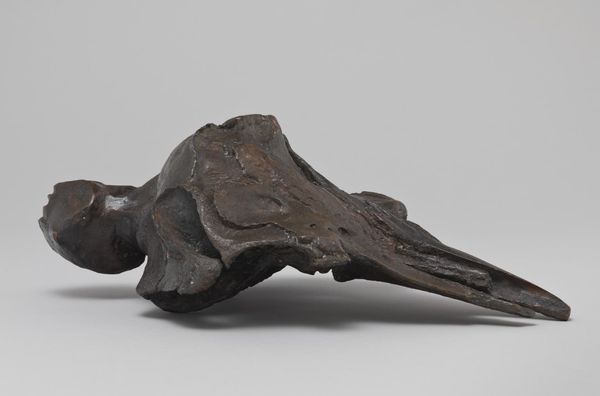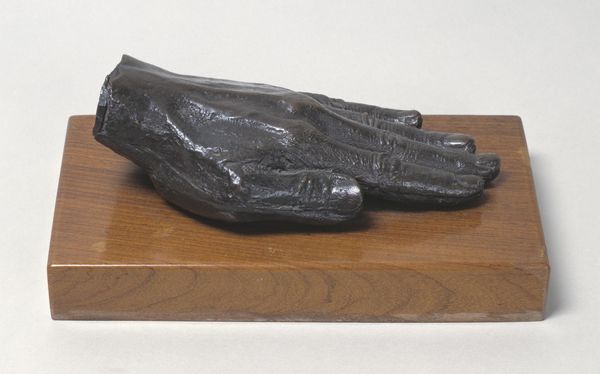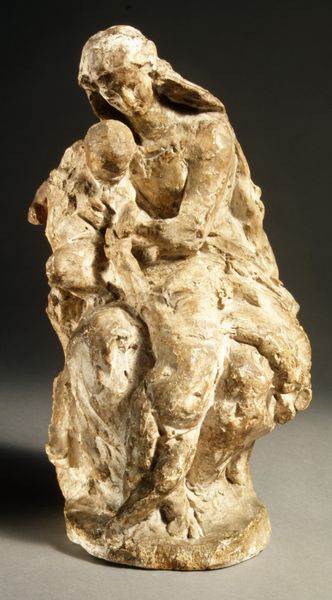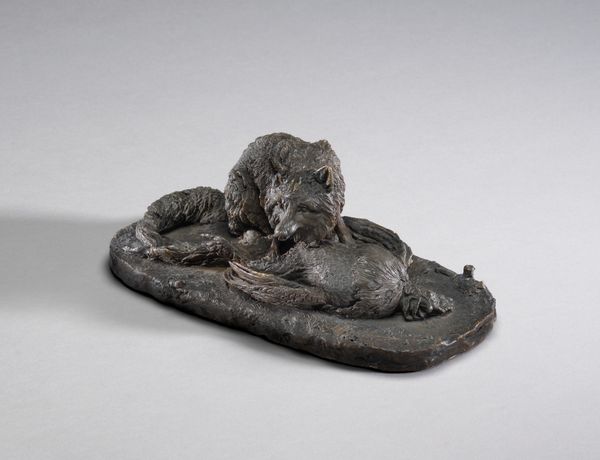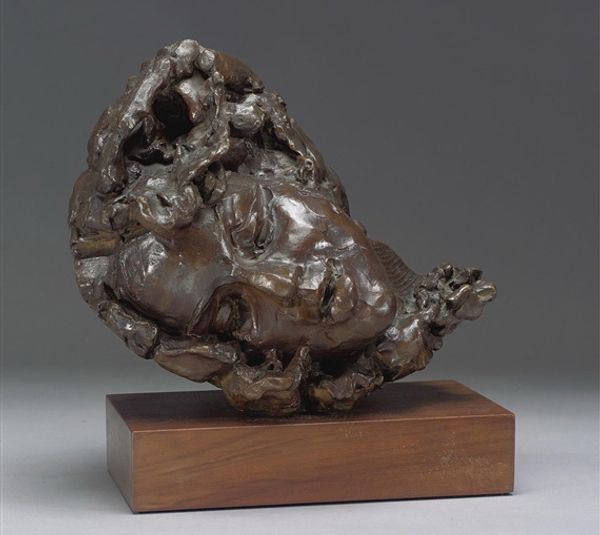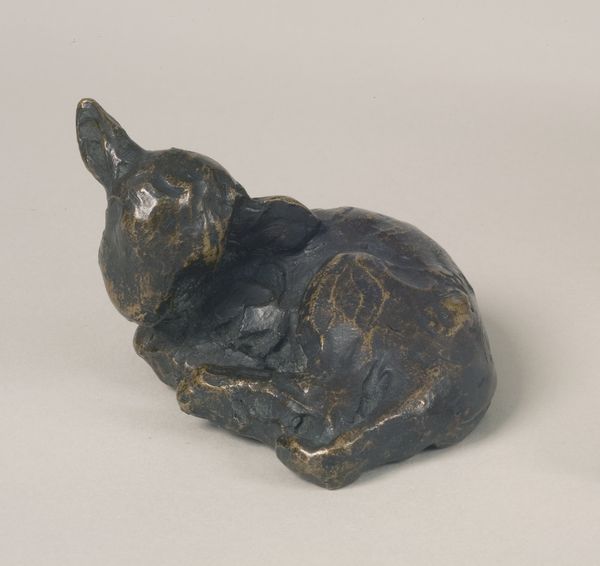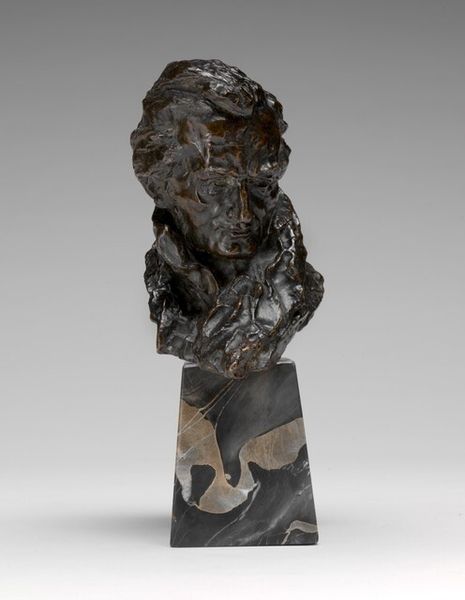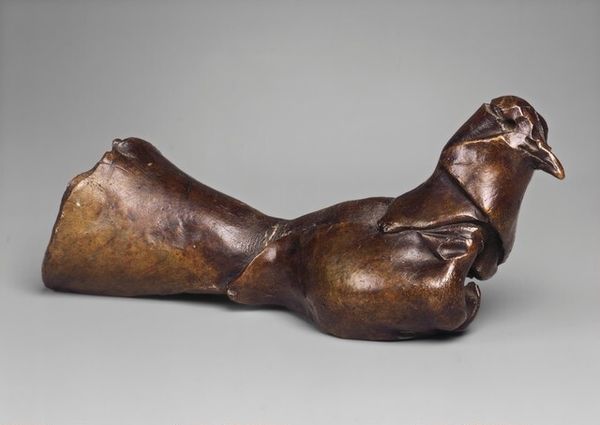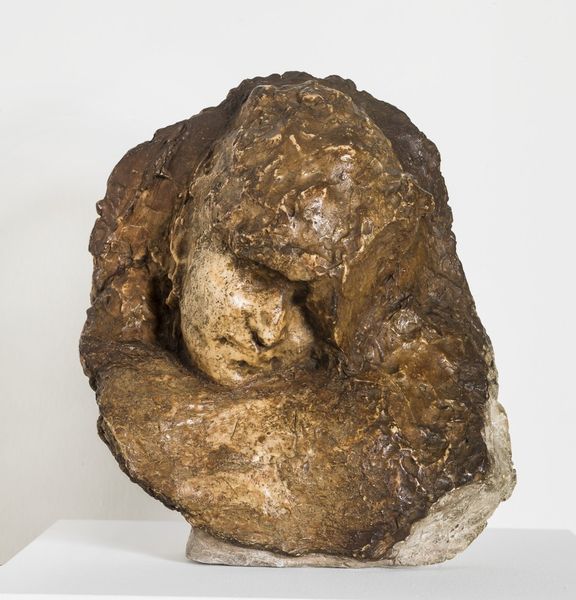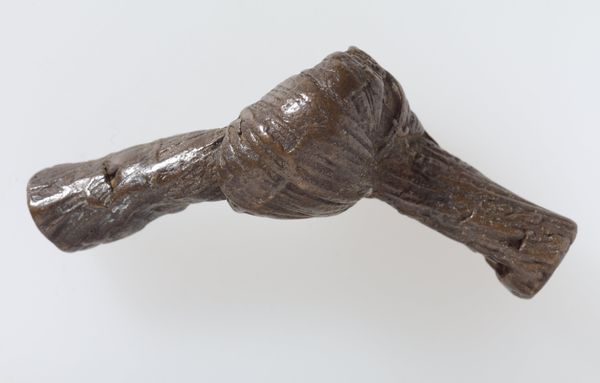
bronze, sculpture
#
abstract-expressionism
#
sculpture
#
bronze
#
sculpture
#
biomorphic
#
modernism
Copyright: Louise Bourgeois,Fair Use
Editor: Here we have Louise Bourgeois’s "Soft Landscape I" from 1967, cast in bronze. Its texture and deep brown color give it an earthy, almost weighty feel. What is your perspective on it? Curator: The sensuousness of the form, the pliability suggested by "Soft Landscape," directly contradicts the rigid permanence associated with bronze casting. Bourgeois takes a material typically used for commemorative statuary, things meant to last and hold power, and instead molds something vulnerable and biomorphic. It challenges not only what sculpture should depict but also its inherent social function. The process itself— the lost wax method perhaps, the hand molding— speaks to a haptic experience, one where labor and material merge into art. Editor: So, it’s less about the final form and more about the process of creation and the materials used? Curator: Exactly! Think about what it means to render something "soft" in a hard material. She’s making us think about oppositions. It also hints at the economics of artmaking: bronze, after all, isn’t cheap. Who has access to such materials, and what does it enable them to create? The rough texture—do you think that was intentional, or was that just inherent in the molding process? Editor: I hadn't considered the implications of using bronze, only its aesthetic qualities. It's interesting how the choice of material can raise so many social and economic questions. I am inclined to think the texture was an intentional component given its effect when coupled with the title of the piece. Curator: Precisely! And what kind of landscape is soft, and how is labor implicated? Editor: It gives me a completely new lens through which to understand sculpture, and how its creation fits within a social context. Curator: Indeed. Focusing on materiality can radically shift your perception of what art communicates, it reframes it as cultural product with direct connections to human action and historical context.
Comments
No comments
Be the first to comment and join the conversation on the ultimate creative platform.
